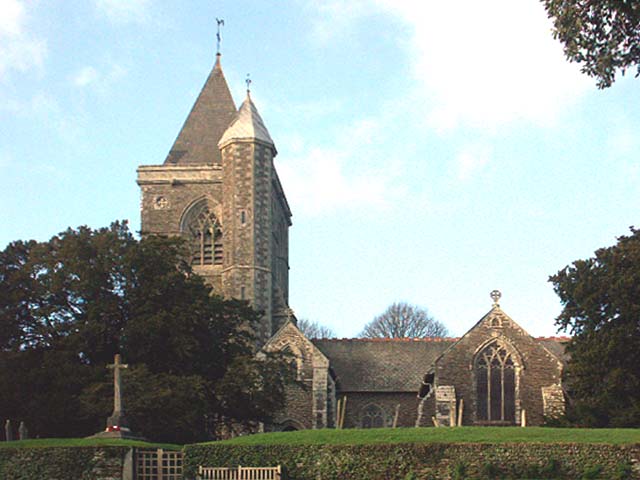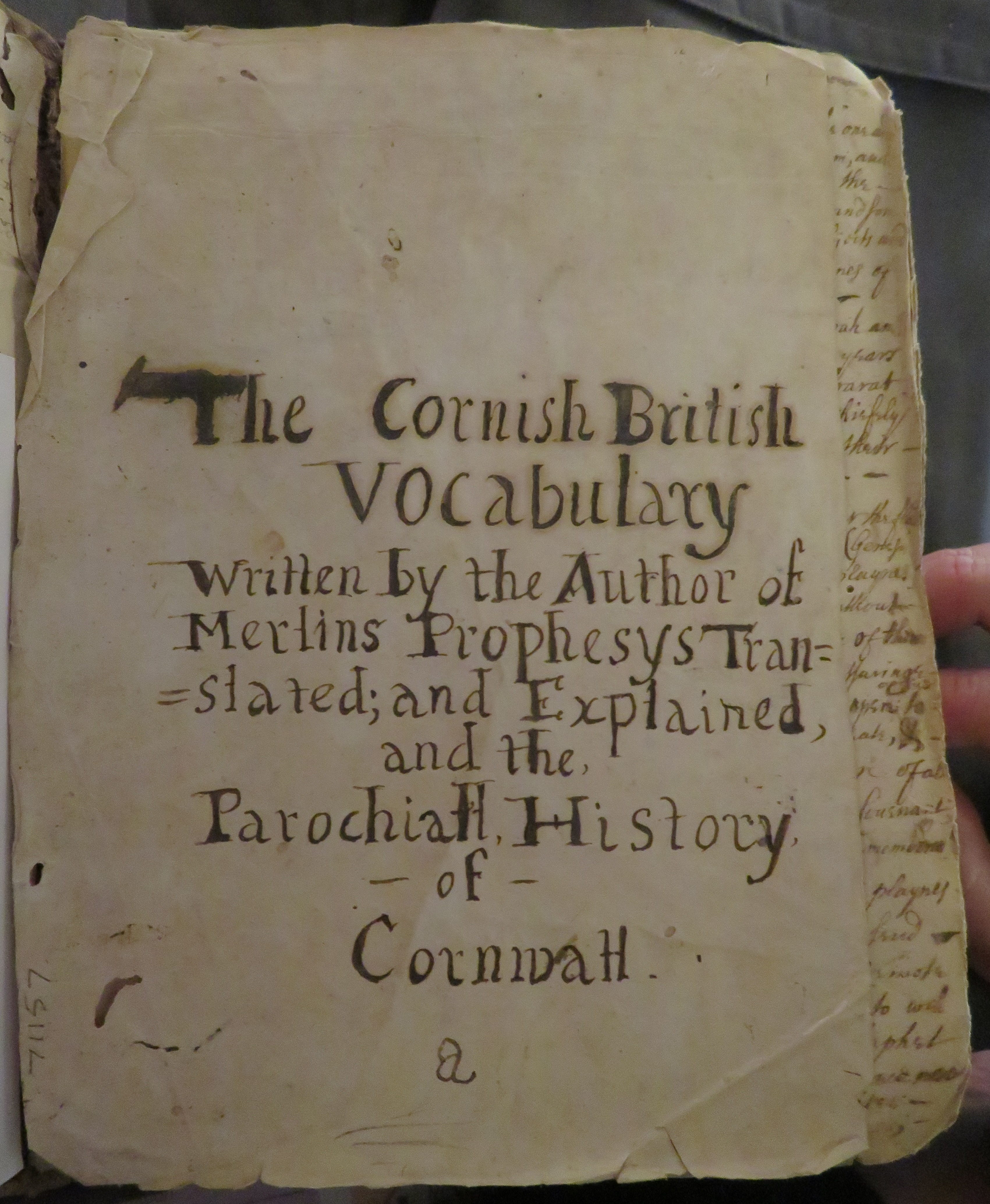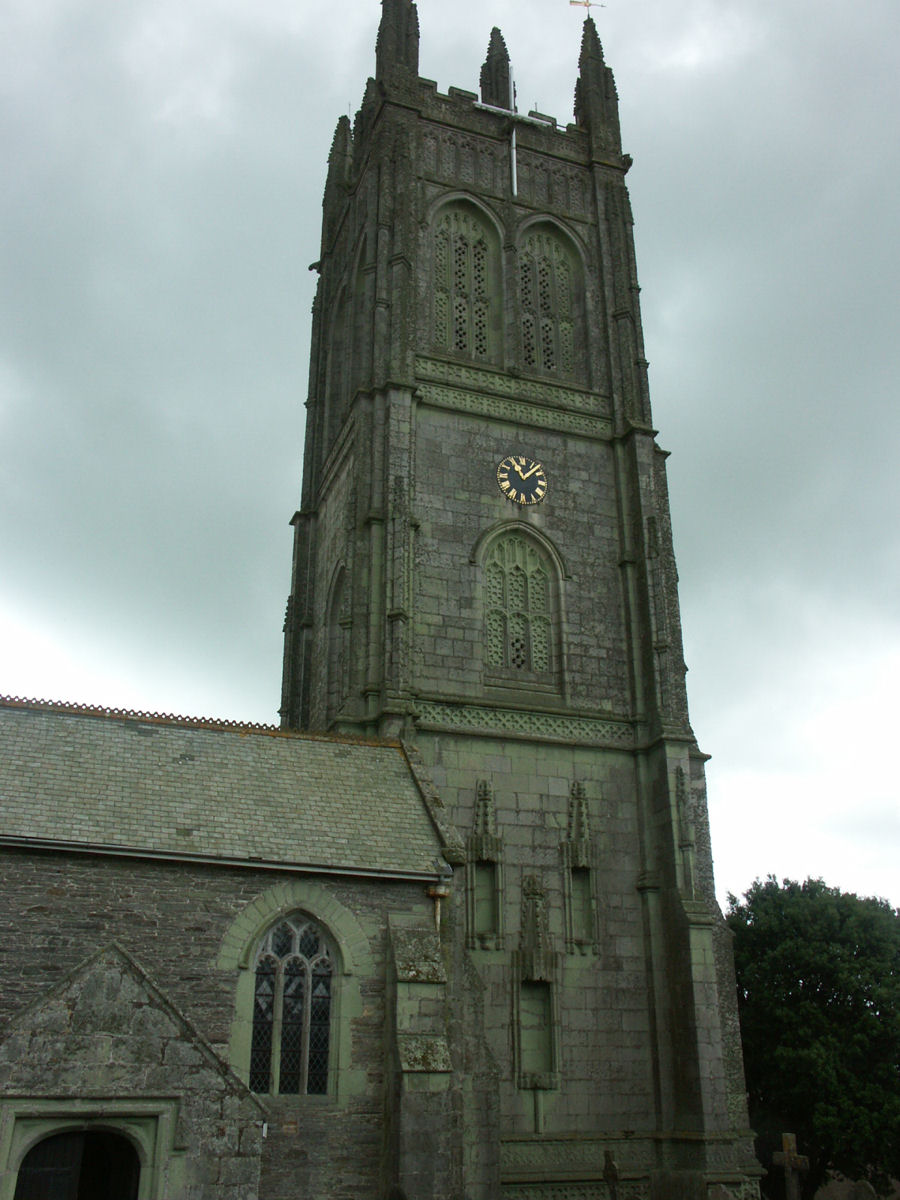|
Merther, Cornwall
Merther ( kw, Eglos Merther, meaning ''marter's church'') is a small hamlet (place), hamlet east of Truro in Cornwall, England. It lies on the eastern side of the Tresillian River in the civil parish of St Michael Penkevil. It was formerly the Churchtown, Cornwall, churchtown of the small parish of Merther, and also the site of a manor house and medieval chapel dedicated to St Cohan (also spelt Coan). The former parish church is now in ruins. St Coan was a martyr; there were formerly at Merther a chapel and holy well dedicated to him. A new church was built at Tresillian, Tresillian Bridge in 1904 (the font, bells, statue of St Anthony and pulpit from Merther were moved to the new church). The church was abandoned in the mid-20th century. Geography Merther (altitude:) is from the eastern bank of the tidal, Treslllian River, a tributary of the River Truro, Truro River which flows into the River Fal. It is via the modern tarmac road to Tresillian Church (which replaced St Coha ... [...More Info...] [...Related Items...] OR: [Wikipedia] [Google] [Baidu] |
St Michael Penkevil
St Michael Penkivel ( kw, Pennkevyl), sometimes spelt ''St Michael Penkevil'', is a civil parish and village in Cornwall, England, United Kingdom. It is in the valley of the River Fal about three miles (5 km) southeast of Truro. The population at the 2011 census was 257. St Michael Penkivel lies within the Cornwall Area of Outstanding Natural Beauty (AONB). Merther and Lamorran are within the parish. History and description The church is close to the Tregothnan estate in a wooded setting and was consecrated in 1261; probably consisting only of a nave and chancel. In 1319 a petition raised by the patron of the church, Sir John Trejagu, was granted by the Bishop of Exeter, Walter de Stapledon; to create a collegiate church by building a chantry for four chaplains. At the time of its restoration by George Street in the 19th century, the church was cruciform with a western tower and south porch. It was re-opened for services on Christmas Eve, 1865. There are some monuments ... [...More Info...] [...Related Items...] OR: [Wikipedia] [Google] [Baidu] |
William Hals
William Hals (1655–1737) was a British historian who compiled a ''History of Cornwall'', the first work of any magnitude that was printed in Cornwall. He was born at Tresawsan, in the parish of Merther in Cornwall. Much of his work was never published but was used by other Cornish historians, including Davies Gilbert, Thomas Tonkin, and John Whitaker. Some of his original work is now held by the British Library. Family His parents were James Hals of Fentongollan, and Anne, daughter of John Martin of Hurston, Devon. James was a son of Sir Nicholas Halse. He married three times. His first wife was an Evans of Landrini in Wales, his second a Carveth of Perranzabuloe, and his last wife was a Courtenay of Tremere. He died without issue in 1737 or 1739 at Tregury (Tregurtha), in the parish of St Wenn, of which he owned the rectorial tithes. Parochial History of Cornwall Hals began his work on the history of Cornwall in 1685, forming a collection which he continued until 1736, but i ... [...More Info...] [...Related Items...] OR: [Wikipedia] [Google] [Baidu] |
Former Civil Parishes In Cornwall
A former is an object, such as a template, gauge or cutting die, which is used to form something such as a boat's hull. Typically, a former gives shape to a structure that may have complex curvature. A former may become an integral part of the finished structure, as in an aircraft fuselage, or it may be removable, being using in the construction process and then discarded or re-used. Aircraft formers Formers are used in the construction of aircraft fuselage, of which a typical fuselage has a series from the nose to the empennage, typically perpendicular to the longitudinal axis of the aircraft. The primary purpose of formers is to establish the shape of the fuselage and reduce the column length of stringers to prevent instability. Formers are typically attached to longerons, which support the skin of the aircraft. The "former-and-longeron" technique (also called stations and stringers) was adopted from boat construction, and was typical of light aircraft built until the a ... [...More Info...] [...Related Items...] OR: [Wikipedia] [Google] [Baidu] |
Mortuary Chapel
A mausoleum is an external free-standing building constructed as a monument enclosing the interment space or burial chamber of a deceased person or people. A mausoleum without the person's remains is called a cenotaph. A mausoleum may be considered a type of tomb, or the tomb may be considered to be within the mausoleum. Overview The word ''mausoleum'' (from Greek μαυσωλείον) derives from the Mausoleum at Halicarnassus (near modern-day Bodrum in Turkey), the grave of King Mausolus, the Persian satrap of Caria, whose large tomb was one of the Seven Wonders of the Ancient World. Historically, mausolea were, and still may be, large and impressive constructions for a deceased leader or other person of importance. However, smaller mausolea soon became popular with the gentry and nobility in many countries. In the Roman Empire, these were often in necropoles or along roadsides: the via Appia Antica retains the ruins of many private mausolea for kilometres outside Rome. Whe ... [...More Info...] [...Related Items...] OR: [Wikipedia] [Google] [Baidu] |
Pentewan Stone
Elvan is a name used in Cornwall and Devon for the native varieties of quartz-porphyry. They are dispersed irregularly in the Devonian series of rocks and some of them make very fine building stones (e.g. Pentewan stone, Polyphant stone and Catacleuse stone). Greenstone is another name for this stone and it is often used for parts of buildings such as doorways so they can be finely carved. Most of the elvan quarries are now disused. Others are quarried in bulk for aggregates commonly used for road-building. More precisely there are two types of rock in this category: one is "white elvan" and the other is "blue elvan". "White elvans" are a group of fine-grained, acid igneous rocks, while "blue elvans" or "greenstones" are various unusual basic igneous rocks. "White elvan" comes from various different locations and is often known as Pentewan stone (or by other names based on the location). Some older descriptions of building stones have called "white elvans" limestone, e.g. in stu ... [...More Info...] [...Related Items...] OR: [Wikipedia] [Google] [Baidu] |
Lamorran
Lamorran is a village southeast of Truro in Cornwall, England (). Lamorran lies within the Cornwall Area of Outstanding Natural Beauty (AONB). Lamorran church was built in the mid-13th century and has never been enlarged. It was dedicated (to St Morenna) in 1261 and restored unsympathetically in 1845 (by William White) and 1853 (for Lord Falmouth; Evelyn Boscawen, 6th Viscount Falmouth (1819–1889)). The tower is separate from the church and the font of Catacleuse stone may be Norman (or 15th century work in the Norman style). A large monument of 1658 commemorates John Verman and his wife. The churchyard cross is a fine example of a Gothic stone cross. This cross is made of Pentewan stone; the crosshead is now incomplete as the upper limb is missing. Lamorran was an ancient parish, and became a civil parish in 1866. The civil parish was abolished in 1934 and absorbed into the civil parish of St Michael Penkevil. For ecclesiastical purposes the parish is now united with Me ... [...More Info...] [...Related Items...] OR: [Wikipedia] [Google] [Baidu] |
Ecclesiastical Parish
A parish is a territorial entity in many Christianity, Christian denominations, constituting a division within a diocese. A parish is under the pastoral care and clerical jurisdiction of a priest#Christianity, priest, often termed a parish priest, who might be assisted by one or more curates, and who operates from a parish church. Historically, a parish often covered the same geographical area as a Manorialism, manor. Its association with the parish church remains paramount. By extension the term ''parish'' refers not only to the territorial entity but to the people of its community or congregation as well as to church property within it. In England this church property was technically in ownership of the parish priest ''Ex officio member, ex-officio'', vested in him on his institution to that parish. Etymology and use First attested in English in the late, 13th century, the word ''parish'' comes from the Old French ''paroisse'', in turn from la, paroecia, the Latinisation ... [...More Info...] [...Related Items...] OR: [Wikipedia] [Google] [Baidu] |
Probus, Cornwall
Probus ('' Cornish: Lannbrobus'') is a civil parish and village in Cornwall, England, in the United Kingdom. It has the tallest church tower in Cornwall. The tower is high, and richly decorated with carvings. The place name originates from the church's dedication to Saint Probus. The parish population at the 2011 census was 2,299, whereas the ward population taken at the same census was 3,953. History There was a monastery here before the Norman Conquest which continued to exist until the reign of Henry I. King Henry gave the church of Probus to Exeter Cathedral and the clergy of Probus thereafter were a dean and five canons (the deanery was abolished in 1268 and the canonries in 1549). The first vicar was instituted in 1312; the parish had dependent chapelries at Cornelly and Merther. The church was built mainly in the 15th century but the tower was still under construction in 1523. In the church is the brass of John Wulvedon and his wife, 1512. In the early years of the 19th c ... [...More Info...] [...Related Items...] OR: [Wikipedia] [Google] [Baidu] |
Chapelry
A chapelry was a subdivision of an ecclesiastical parish in England and parts of Lowland Scotland up to the mid 19th century. Status It had a similar status to a township but was so named as it had a chapel of ease (chapel) which was the community's official place of worship in religious and secular matters, and the fusion of these matters — principally tithes — initially heavily tied to the main parish church. The church's medieval doctrine of subsidiarity when the congregation or sponsor was wealthy enough supported their constitution into new parishes. Such chapelries were first widespread in northern England and in largest parishes across the country which had populous outlying places. Except in cities the entire coverage of the parishes (with very rare extra-parochial areas) was fixed in medieval times by reference to a large or influential manor or a set of manors. A lord of the manor or other patron of an area, often the Diocese, would for prestige and public ... [...More Info...] [...Related Items...] OR: [Wikipedia] [Google] [Baidu] |
King Athelstan
King is the title given to a male monarch in a variety of contexts. The female equivalent is queen, which title is also given to the consort of a king. *In the context of prehistory, antiquity and contemporary indigenous peoples, the title may refer to tribal kingship. Germanic kingship is cognate with Indo-European traditions of tribal rulership (c.f. Indic ''rājan'', Gothic '' reiks'', and Old Irish '' rí'', etc.). *In the context of classical antiquity, king may translate in Latin as '' rex'' and in Greek as ''archon'' or ''basileus''. *In classical European feudalism, the title of ''king'' as the ruler of a ''kingdom'' is understood to be the highest rank in the feudal order, potentially subject, at least nominally, only to an emperor (harking back to the client kings of the Roman Republic and Roman Empire). *In a modern context, the title may refer to the ruler of one of a number of modern monarchies (either absolute or constitutional). The title of ''king'' is us ... [...More Info...] [...Related Items...] OR: [Wikipedia] [Google] [Baidu] |
Martyr
A martyr (, ''mártys'', "witness", or , ''marturia'', stem , ''martyr-'') is someone who suffers persecution and death for advocating, renouncing, or refusing to renounce or advocate, a religious belief or other cause as demanded by an external party. In the martyrdom narrative of the remembering community, this refusal to comply with the presented demands results in the punishment or execution of an actor by an alleged oppressor. Accordingly, the status of the 'martyr' can be considered a posthumous title as a reward for those who are considered worthy of the concept of martyrdom by the living, regardless of any attempts by the deceased to control how they will be remembered in advance. Insofar, the martyr is a relational figure of a society's boundary work that is produced by collective memory. Originally applied only to those who suffered for their religious beliefs, the term has come to be used in connection with people killed for a political cause. Most martyrs are consid ... [...More Info...] [...Related Items...] OR: [Wikipedia] [Google] [Baidu] |
Demesne
A demesne ( ) or domain was all the land retained and managed by a lord of the manor under the feudal system for his own use, occupation, or support. This distinguished it from land sub-enfeoffed by him to others as sub-tenants. The concept originated in the Kingdom of France and found its way to foreign lands influenced by it or its fiefdoms. In England, Wales and Northern Ireland, royal demesne is the land held by the Crown, and ancient demesne is the legal term for the land held by the king at the time of the Domesday Book. Etymology The word derives from Old French , ultimately from Latin , "lord, master of a household" – ''demesne'' is a variant of ''domaine''. The word ''barton'', which is historically synonymous to ''demesne'' and is an element found in many place-names, can refer to a demesne farm: it derives from Old English ''bere'' (barley) and ''ton'' (enclosure). Development The system of manorial land tenure, broadly termed feudalism, was conceived in France ... [...More Info...] [...Related Items...] OR: [Wikipedia] [Google] [Baidu] |




.jpeg/1200px-Taj_Mahal_(Edited).jpeg)
_(FindID_258401).jpg)






